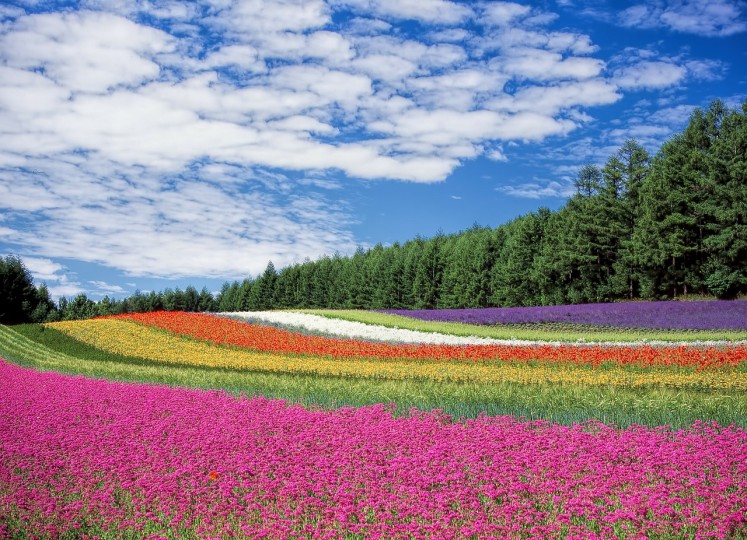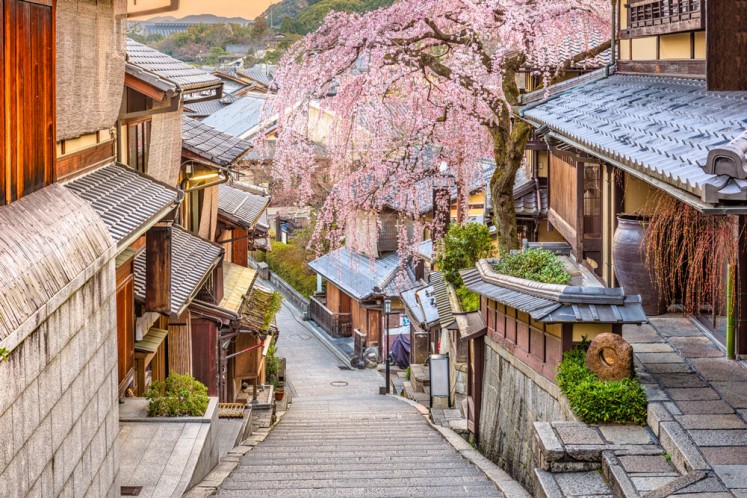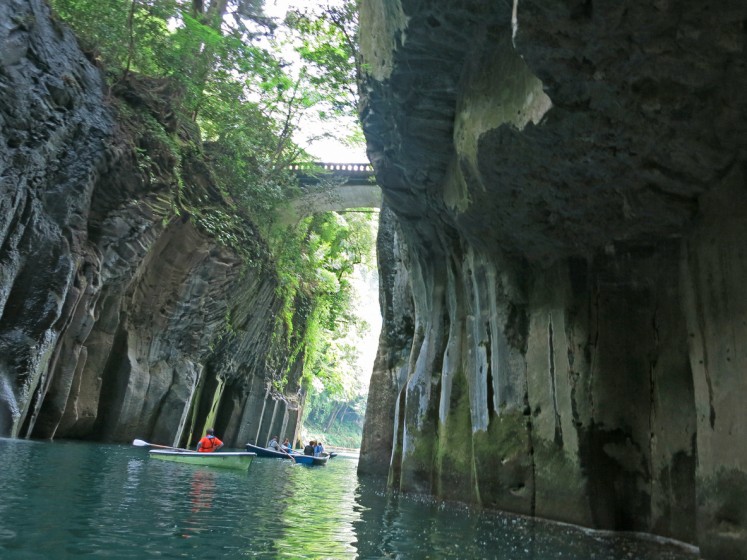Popular Reads
Top Results
Can't find what you're looking for?
View all search resultsPopular Reads
Top Results
Can't find what you're looking for?
View all search resultsFestivals, outdoor excursions await summer visitors in Japan
Change text size
Gift Premium Articles
to Anyone
S
ummer in Japan can be stifling, with temperatures getting as high as 39 degrees Celsius, while June often sees heavy rains, adding humidity to the heat.
One way to tackle the heat is to hike in Hokkaido or in the Japanese Alps on Honshu, where it’s cooler. In the cities, seeing the sights in the heat can be tiring, but luckily, the Japanese tradition of drinking beer comes into its own during the season. Rooftop beer gardens appear in most cities, so you can always find somewhere to have a cold drink in the shade.
Culturally, summertime in Japan is fascinating. Festivals and fireworks, called hanabi, light up the country. Obon, a national holiday when Japanese Buddhists honor their ancestors, also takes place in the summer.
Planning for a holiday during the Japanese summer? Bookmundi presents seven best places for experiencing the best the season has to offer.
Hokkaido
Japan's northernmost island of Hokkaido is the perfect escape during the Japanese summer. It is the only place that doesn’t see any rain in June and is also the coolest region – in summer, temperatures can be a mere 26 degrees Celsius (compared to 31 degrees in Tokyo).
Much of the region is untouched wilderness, and there are six national parks, making it ideal for hikers, cyclists and outdoor enthusiasts. Mount Asahi is the tallest mountain on Hokkaido and is perfect for a summer hike. Furano is where the famous (and Instagram-worthy) lavender fields bloom.
The region will interest wildlife lovers too, with more than 200 bird species and its claim to being the only region in Japan with a native brown bear population.
Mount Fuji
The Mount Fuji climbing season begins in July and ends in mid-September. Conquering the 3,776-meter peak is the No. 1 activity for visitors to Japan, and these days you will find its slopes very crowded. If you are looking for something more adventurous, opt for paragliding from the summit.
Climbing Mount Fuji is quite taxing. If you prefer to take things easy, the surrounding area, known as the Fuji Five Lakes, has plenty of leisurely walks, and the nearby town of Hakone is known for its hot springs. Many local resorts and hotels have clear views of the mountain in all its splendor.
Japanese Alps
If Mount Fuji has whetted your appetite, the Japanese Alps presents many other mountaineering and hiking opportunities. Composed of three mountain ranges and located in roughly the center of the main island of Honshu, the Japanese Alps is a popular summertime retreat because of its cool climate.
Roads blocked by snow during the winter finally reopen for summer, and it becomes possible to visit areas like Kamikochi Valley (open from mid-April to mid-November). Hiking in the valley strewn with wildflowers is enjoyable, and you can stay overnight in mountain huts.
You will also come across temple towns and discover local crafts like woodcarving. With good rail connections to the rest of Japan, the Japanese Alps is a good destination for a quick break of for a longer sojourn.
Sado Island
Famous for its musical traditions and history, Sado Island is the location of one of Japan’s must-see festivals, the Earth Festival in Ogi.
Over three days in August, Kodo drummers beat huge drums known as taiko, a feat of strength and a remarkable aural experience to boot. Other summer festivals on Sado Island include the Yoi No Mai festival in June, with music and dancing in traditional dress.
Cycling around the island and camping are popular summer activities. Stop by the traditional fishing villages along the scenic coastline while exploring the island, much of which is untouched by tourism.
Kyoto
One of the key reasons for visiting Kyoto is the city’s traditional summer festivals. In July, Kyoto hosts one of the oldest festivals in the world, the Gion Matsuri.
The entire month is full of parades and performances, and traditional foods and sweets are served on the street. Kyoto’s Obon festival in August is also remarkable, with bonfires illuminating the hills surrounding the city, which is famed as the center of traditional Japanese culture.
Although temperatures can reach the high 30s, a spot in the shade can be found easily in Kyoto, with more than a thousand temples and dozens of beautiful gardens. Many locations transform into outdoor bars in the evening for enjoying cold beer and summer Japanese fare. Another way to escape the heat is to walk in the bamboo garden at Arashiyama, an experience many travellers have deemed unmissable.
Okinawa
Located between Japan and Chinese Taiwan in the East China Sea, the tropical archipelagic prefecture of Okinawa is the place to go if you are looking for a beachside getaway. With more than 4,000 types of coral, the island chain is one of the world's best places for diving, and is also excellent for snorkeling, sport fishing and surfing (if you are experienced).
In the summer months, Okinawa can get very crowded, so many travelers wait until September or stay on some of the less well-known islands. Okinawa has more than 140 islands, but only around 40 are inhabited, so it is also a perfect destination for adventurers looking for somewhere new to explore.
Kyushu
The island of Kyushu has both urban and rural destinations, including the intriguing Nagasaki.
Although it can get hot and humid, Kyushu has cool mountain environs and forested national parks. A popular activity is rowing or kayaking in the Takachiho Gorge. Popular hiking destinations include Mount Kaimon and Mount Aso, one of the largest caldera in the world.
Off the coast of Kyushu, the rainy and fertile island of Yakushima is full of forests and waterfalls, and home to around 1,900 species of flora. The island is also home to ancient cedar forests that have some of the oldest trees in the world.
Japan has many locations for exploring during the summer as well as the winter, along with a whole host of outdoor pursuits, including mountaineering, hiking, rafting, kayaking and surfing. So instead of your usual beach holiday this year, why not give Japan a try instead?
Bookmundi is a Denmark-based, global travel booking portal that offers day tours, holiday packages and fixed group departures and holidays in 120+ countries in the world, including Japan.













